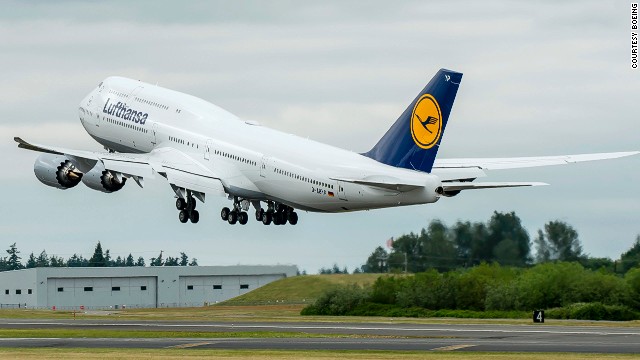 The Boeing 747 is one of the iconic commercial jets of the 20th century. It arrived in the late 1960s largely because Pan Am thought bigger planes would be the answer to passenger congestion at airports. The 747 was 2.5 times the size of Boeing's earlier 707 model and was the world's first wide-body aircraft. Its distinctive front bulge came from placing the cockpit on an upper deck, allowing a freight-loading door in the nose. Pilots were trained to taxi this beast by sitting three stories high on a moving truck. Lufthansa received deliver of the 1,500th 747 on June 28.
The Boeing 747 is one of the iconic commercial jets of the 20th century. It arrived in the late 1960s largely because Pan Am thought bigger planes would be the answer to passenger congestion at airports. The 747 was 2.5 times the size of Boeing's earlier 707 model and was the world's first wide-body aircraft. Its distinctive front bulge came from placing the cockpit on an upper deck, allowing a freight-loading door in the nose. Pilots were trained to taxi this beast by sitting three stories high on a moving truck. Lufthansa received deliver of the 1,500th 747 on June 28. 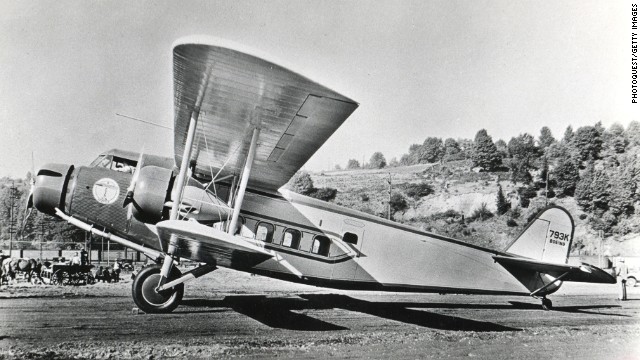 Built in 1928, the Model 80 was America's first airliner designed to transport passengers on a scheduled service. It had room for three crew, 18 passengers and 408 kilograms of cargo. The fuselage was covered in fabric. Pilots accustomed to open-air cockpits complained about the enclosed flight deck. Cost: $140,000.
Built in 1928, the Model 80 was America's first airliner designed to transport passengers on a scheduled service. It had room for three crew, 18 passengers and 408 kilograms of cargo. The fuselage was covered in fabric. Pilots accustomed to open-air cockpits complained about the enclosed flight deck. Cost: $140,000.  Debuting in 1933, the Boeing 247 held three crew, 10 passengers and 182 kilograms of mail. It had a range of 1,198 kilometers and a ceiling of 25,400 feet. The world's first truly modern airliner, it was also the first to incorporate and combine retractable landing gear. It took 20 hours to fly from New York to Los Angeles, including seven stops.
Debuting in 1933, the Boeing 247 held three crew, 10 passengers and 182 kilograms of mail. It had a range of 1,198 kilometers and a ceiling of 25,400 feet. The world's first truly modern airliner, it was also the first to incorporate and combine retractable landing gear. It took 20 hours to fly from New York to Los Angeles, including seven stops.  The "Jumbo" of its time, the 314 Clipper made the first scheduled trans-Atlantic flight in 1939. It held 74 passengers and cemented regular flying on long-haul routes from North America across the Pacific to Asia and across the Atlantic to Europe. Its well-appointed cabin heralded the real birth of in-flight service.
The "Jumbo" of its time, the 314 Clipper made the first scheduled trans-Atlantic flight in 1939. It held 74 passengers and cemented regular flying on long-haul routes from North America across the Pacific to Asia and across the Atlantic to Europe. Its well-appointed cabin heralded the real birth of in-flight service. 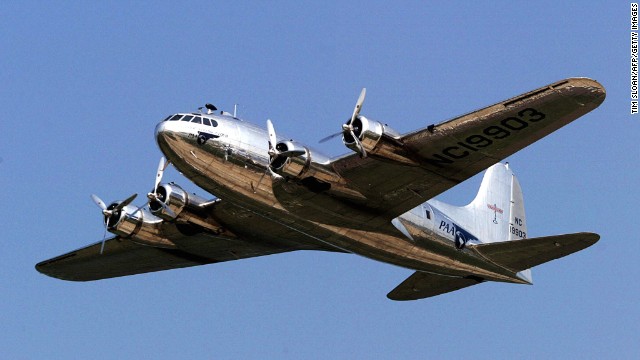 Based on the B-17 military bomber, Boeing's 307 Stratoliner first flew on December 31, 1938. It was the first commercial transport aircraft with a pressurized cabin, allowing it to fly above the clouds and bad weather. Howard Hughes bought one, and turned it into a "flying penthouse" with a bedroom, two bathrooms and lounge area.
Based on the B-17 military bomber, Boeing's 307 Stratoliner first flew on December 31, 1938. It was the first commercial transport aircraft with a pressurized cabin, allowing it to fly above the clouds and bad weather. Howard Hughes bought one, and turned it into a "flying penthouse" with a bedroom, two bathrooms and lounge area.  The 707 doesn't look like much now, but it started the 7-series of Boeing planes and is viewed as the jet that ushered in commercial air travel. It was the dominant passenger airplane of the 1960s.
The 707 doesn't look like much now, but it started the 7-series of Boeing planes and is viewed as the jet that ushered in commercial air travel. It was the dominant passenger airplane of the 1960s.  Boeing struck gold with the 727. Just 250 were planned, but demand was so high a total of 1,832 were built by the time production ceased in 1984. The most distinctive of Boeing's early jets, with a T-shaped tail and a trio of rear-mounted engines, the noisy 727 took its first flight in 1963. It was designed to use smaller, less developed runways, making it amenable to a host of out of the way airports.
Boeing struck gold with the 727. Just 250 were planned, but demand was so high a total of 1,832 were built by the time production ceased in 1984. The most distinctive of Boeing's early jets, with a T-shaped tail and a trio of rear-mounted engines, the noisy 727 took its first flight in 1963. It was designed to use smaller, less developed runways, making it amenable to a host of out of the way airports. 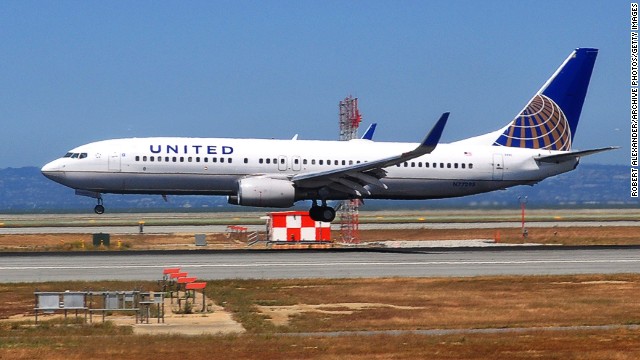 Chances are you've flown on a 737, which has been around since 1967. The best-selling jet in aviation history offered six-abreast seating, allowing more passengers per flight. The number of seats was increased by moving the engines under the wing. Flight engineers were made redundant by the 737's technology and a two-crew cockpit became standard.
Chances are you've flown on a 737, which has been around since 1967. The best-selling jet in aviation history offered six-abreast seating, allowing more passengers per flight. The number of seats was increased by moving the engines under the wing. Flight engineers were made redundant by the 737's technology and a two-crew cockpit became standard. 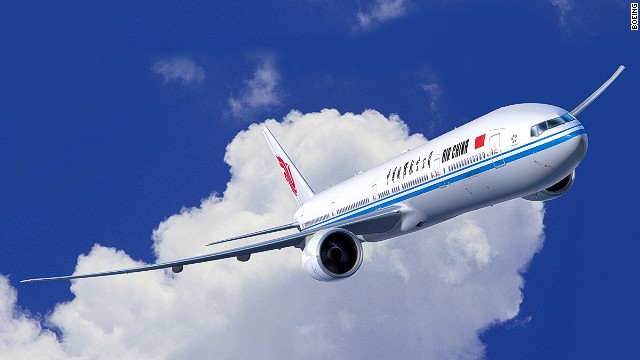 Upon hitting the skies in 1994, the 777 became the widest, most spacious jetliner in its class. Carriers have increasingly used the 777 as a fuel-efficient alternative to other wide-body jets, particularly for long-haul flights.
Upon hitting the skies in 1994, the 777 became the widest, most spacious jetliner in its class. Carriers have increasingly used the 777 as a fuel-efficient alternative to other wide-body jets, particularly for long-haul flights. 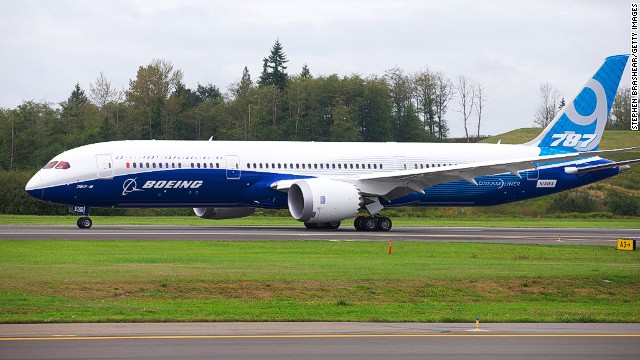 The Dreamliner is said to have revolutionized jetliner design and brought commercial aeronautics into the 21st century. Its "plastic" fuselage makes it lighter and 20% more fuel-efficient than similar-sized aircraft, while it claims to enhance the passenger experience with bigger windows and more space. Nevertheless, Boeing's 787 Dreamliner launch gave the company a nightmarish ride. The four-month global grounding of the entire Dreamliner fleet earlier this year, kicked off by a battery fire on an ANA flight in January, has been unprecedented in the past 30 years. The grounding was lifted at the end of April.
The Dreamliner is said to have revolutionized jetliner design and brought commercial aeronautics into the 21st century. Its "plastic" fuselage makes it lighter and 20% more fuel-efficient than similar-sized aircraft, while it claims to enhance the passenger experience with bigger windows and more space. Nevertheless, Boeing's 787 Dreamliner launch gave the company a nightmarish ride. The four-month global grounding of the entire Dreamliner fleet earlier this year, kicked off by a battery fire on an ANA flight in January, has been unprecedented in the past 30 years. The grounding was lifted at the end of April. 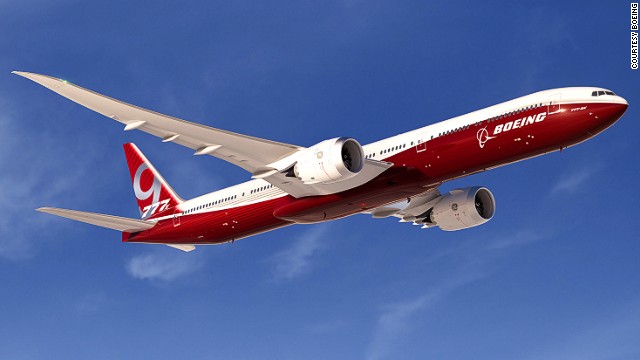 Boeing officially launched its 777X program this week at the Dubai Air Show. The 8X version will offer a range of more than 9,300 nautical miles and have room for 350 passengers. The 9X will have a range of over 8,200 nautical miles and fit 400 passengers. Notable changes from the original 777 include a longer, composite wing and a new GE engine. Production is scheduled to begin in 2017 and first delivery is targeted for 2020.
Boeing officially launched its 777X program this week at the Dubai Air Show. The 8X version will offer a range of more than 9,300 nautical miles and have room for 350 passengers. The 9X will have a range of over 8,200 nautical miles and fit 400 passengers. Notable changes from the original 777 include a longer, composite wing and a new GE engine. Production is scheduled to begin in 2017 and first delivery is targeted for 2020.
- German airline Lufthansa takes delivery of 1,500th Boeing 747 -- a major landmark for large passenger jets
- 747 is credited with ushering in an era of mass tourism by making air travel more affordable
- The aircraft's milestone comes at a time when aviation industry is moving away from large aircraft
(CNN) -- It's the biggest milestone yet for the aircraft affectionately known as the "Queen of the Skies."
The 1,500th Boeing 747 has been delivered to German carrier Lufthansa -- a figure unsurpassed by any other wide-bodied plane.
To celebrate, the plane was greeted with a ribbon-cutting ceremony and given a special logo in honor of its status.
History of an icon
The revolutionary jet is beloved not only for its mammoth size and recognizable shape, but for the way it's influenced the aviation industry during a five-decade career.
After debuting in 1969 at the Paris Air Show, it opened up air travel to millions of passengers previously unable to afford taking to the skies.
Able to fly longer and carry twice as many passengers as its ancestor, the 707, the plane's arrival led to a drop in ticket prices and ushered in a new era of mass tourism.
Tom Ballantyne, aviation journalist and chief correspondent at Orient Aviation magazine, said the 747 also heralded a new standard for in-flight comfort.
"And let's not forget the freighter version also changed the air cargo scene, allowing air transport to move large items and freight in bulk it had not been able to handle previously," he told CNN.
MORE: Best of Boeing: 10 revolutionary aircraft
The 747's milestone comes as the aviation market is shifting away from jumbo jets.
Many airlines now prefer to run medium-sized twin-engine planes -- such as the Boeing 777 or Airbus A330 -- on more frequent timetables than operate four-engine double-decker jets.
The smaller planes seat fewer passengers but cover the same distances and need less fuel.
Japanese carrier ANA made headlines earlier this year when it retired its last two 747s for economic reasons, despite the airline's professed emotional ties to the aircraft.
The jumbo jet breaks another record.
Biggest fan
Lufthansa remains one of the few champions of the new Intercontinental, as its newest incarnation, the 747-8, is known.
Only four other airlines had taken orders of the 747-8 as of February 2014, according to the New York Times.
"Lufthansa is honored that the 1,500th 747 will fly with the Lufthansa livery," the airline's executive vice president, Nico Buchholz, said in a statement.
The 1,500th plane is the Frankfurt-based airline's 14th 747-8 Intercontinental. Lufthansa has 19 more still on order.
MORE: Flying the flag: Great World Cup airplane paint jobs
No comments:
Post a Comment